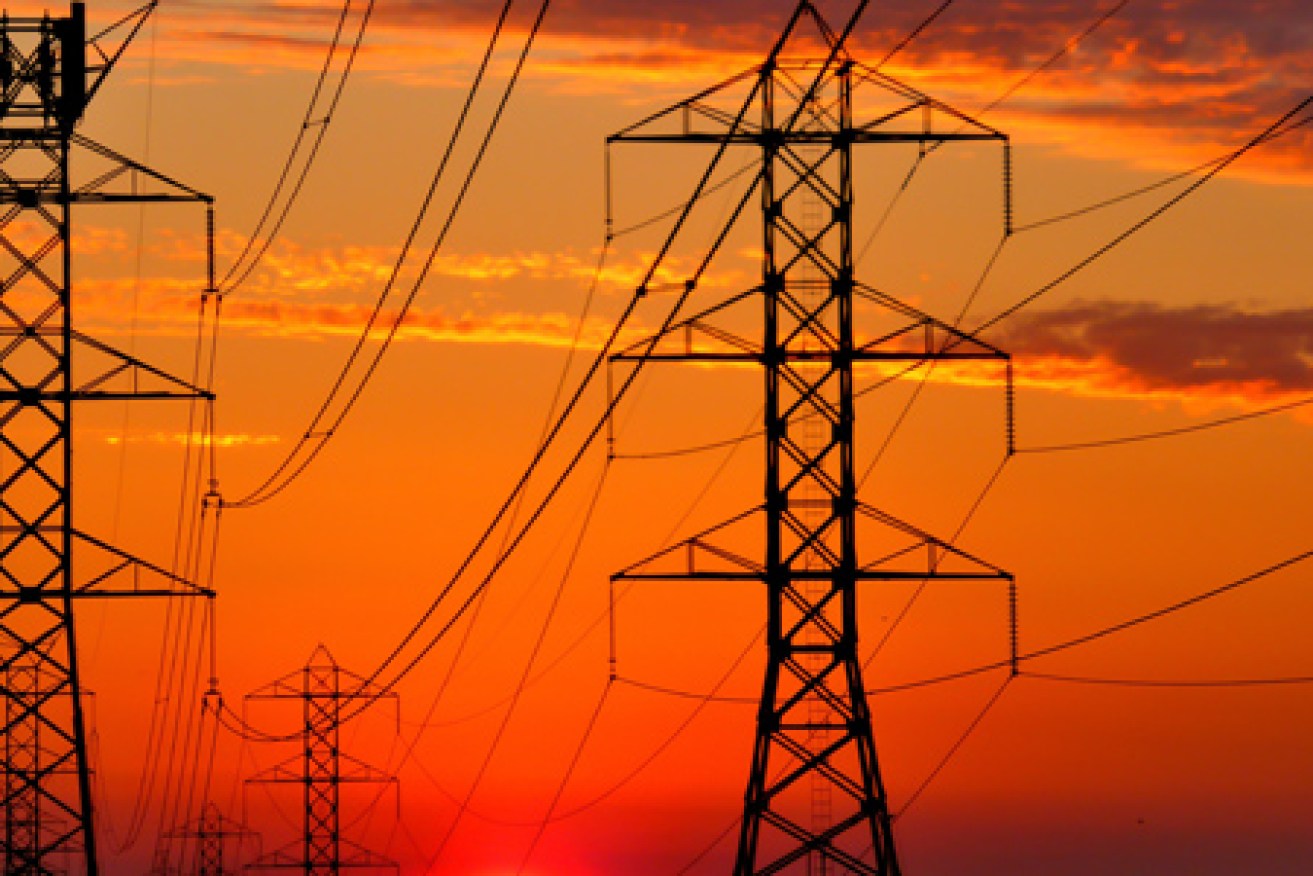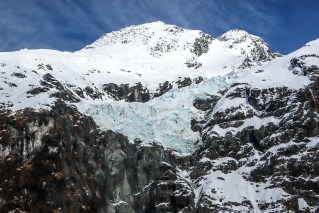Heatwave pushing electricity supply to breaking point

Late afternoon demand for power will put the grid under pressure, AEMO says. Photo: Getty
No weather event affects the power system more than heatwaves, and electricity reserves have been predicted to tighten as temperatures reach extreme levels in Australia’s east over coming days.
In parts of northern New South Wales and south-east Queensland, the Bureau of Meteorology says it is looking like a five or six-day heatwave for millions of people.

It’s never too hot to play fetch, even in a fur coat, for this Sydney pooch, who appreciated the cooling dip. Photo: AAP/Joel Carrett
Overnight, the Australian Energy Market Operator (AEMO) said there might not be enough reserve capacity (Lack of Reserve Level 1) in New South Wales this afternoon between 3.30pm and 5.30pm.
Earlier in the week, it also said Queensland would likely be affected on Wednesday.
The Queensland prediction was serious enough to prompt an official Lack of Reserve level 2 (LOR2) forecast, meaning the possible shortfall could be enough to require the AEMO to ask big energy users to use less power.
“LOR2 means we are one contingency away from load shedding,” said Ben Skinner, the general manager of policy at the Australian Energy Council.
But by Thursday, the AEMO had downgraded the forecast risk to LOR1.
“That is mild in terms of reserves, and they’re largely being met at the moment, but we’ll watch that very carefully to manage that over the coming days,” said Michael Gatt, the AMEO’s chief operations officer.
Youtube BOM severe weather update (Nov 27): Exceptional heatwave across eastern Australia.
No single factor affects the power industry more than weather, especially as weather-dependent renewables claim a larger slice of the electricity market.
“The energy networks are looking at the weather days or weeks in advance to understand what that impact is going to be on supply and demand,” Weatherzone energy manager Josh Fisher said.
Weatherzone supplies the big generators and the AEMO with half-hourly weather forecasts 14 days in advance. Over a week ago, Weatherzone notified energy customers that a heatwave was forming.
The biggest impact on electricity demand, by far, is from air conditioners.
A severe heatwave is set to swelter large parts of the country this weekend, with some places likely to reach almost 50 degrees.
Heatwaves are becoming hotter, lasting longer and occurring more often due to climate change. @TheNewDailyAU https://t.co/gKTmw3qh4a
— Climate Council (@climatecouncil) November 26, 2020
In Adelaide and Melbourne, demand could double in a heatwave due to air conditioning, Mr Skinner said.
“At about 7:00pm or 8:00pm on a typical Victorian weekday, the demand would be about 5,000 megawatts; on an absolute extreme stinker of a day, maybe 43 degrees or something, it would be around 9,500 megawatts. That’s huge.
“So more than half of the electricity will be going through an air conditioner, and then if the wind turns around the next day, all of those air conditioners will be off.”
Supply and demand
The job of instantly matching the amount of electricity Australians need with the amount of electricity generators make falls to the AEMO.
“Our role is to be able to forecast demand on the network with a degree of precision,” Mr Gatt said.
It coordinates the dispatching of generators by accepting bids to generate power, and, like any market, when demand is high and supply is tight, prices can go through the roof.
“Base-loaders [like coal plants] will tend to bid at a lower price and the peak loaders [like gas plants] will bid at a higher price,” Mr Skinner said.

Gas-fired plants stand ready to fill the power gap, but the price is steep. Photo: ABC
The first capital to feel the heat this week was Adelaide, which hit 40.6C on Friday — at 7:00pm, the wholesale electricity spot price in South Australia reached $329 per megawatt hour, more than eight times the average price.
“The peaking generators are obviously saying, ‘Well, I’m not getting out of bed until you give me enough money to make it worth my while’,” Mr Skinner said.
South Australia’s normally strong wind resources were only able to provide less than 10 per cent of Friday’s evening peak.
“There’s this unfortunate characteristic in South Australia where on really hot days, the evening peak in electricity demand often occurs with a lull in the wind,” Mr Skinner said.
With little low-cost power available to help keep prices down and interstate electricity imports at their maximum, expensive gas peaking plants set the price.
Black Summer’s record prices
On January 4 this year, Sydney was hit by 42-degree temperatures.
At the same time, bushfires in the Snowy Mountains took out transmission lines connecting New South Wales to Victoria, right when demand was highest.
Electricity spot prices skyrocketed, reaching $14,700 per megawatt hour in NSW late in the day — about 300 times the average wholesale price.
Incredibly, there were no blackouts despite the hit to the network.
“From time to time, you have unusual situations where supply and demand in any one area can be challenging,” Mr Gatt said.
“January 4 was a highly unusual scenario where you’ve got some fairly significant network events with a backdrop of over 100 bushfires throughout the country.”
Despite the AEMO’s best planning and forecasts, not every failure can be predicted.
#HEATWAVE // With the @BOM_NSW forecasting heatwave conditions for most parts of NSW this weekend, surf lifesavers are reminding beachgoers to visit patrolled beaches and swim between the red and yellow flags.
🗞️ https://t.co/mOMtbHbuty pic.twitter.com/2kf9rvdAf7
— Surf Life Saving NSW (@slsnsw) November 27, 2020
On December 20 last year, when Melbourne reached 43.5C, a series of wind turbines unexpectedly switched themselves off.
“All of a sudden, over 1,000 megawatts suddenly just tripped out — we went from a system that appeared to be really fat, to having to put out an emergency reserve notice,” Mr Skinner said.
“It got really tight and nearly came to load shedding.”
It turned out the turbines were set to switch off at 40C to protect them from overheating.
“I don’t think even the owners anticipated it,” Mr Skinner said.
Despite this weekend’s heatwave, the La Niña weather pattern may ease pressure on the electricity network this summer, as the climate driver is associated with less intense heatwaves in the south-east of Australia.
But La Niña could also affect renewables, according to Weatherzone’s Josh Fisher.

More renewable energy sources are coming online to solve the shortfall. Photo: Getty
“La Niña typically means that we see more cloud cover, particularly through eastern parts of Australia,” he said.
“During that time you can also see lower wind speeds, so this year could be an interesting year where we see more cloud cover through the eastern states reducing the overall solar generation in periods where we see less wind generation potential across southern Australia.”
In its Summer Readiness Plan released on Friday, the AEMO predicted sufficient energy supply across the peak season, with similar or reduced maximum demand compared to last summer and new renewables added to supply.
In other words, this summer should be better than last.









